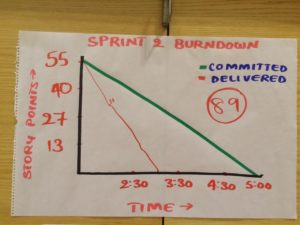
Agilemania
Agilemania, a small group of passionate Lean-Agile-DevOps consultants and trainers, is the most tru... Read more

Agilemania, a small group of passionate Lean-Agile-DevOps consultants and trainers, is the most tru... Read more


Almost every organizations keep looking for more and more metrics to control something or especially organizations that I visit for work as agile coach/consultant. Need for metrics arises during discussion with management but many time management fails to explain objective behind asking so many metrics.
I feel these metrics sometime trigger poor communication, set wrong objective and create absence of trust within team. Organization should focus more on building practices and better innovative processes to meet stated objective. Metrics needed for sure because it helps organization in deciding future course of action and help team to stay focused but metrics without practice? NO because that may demotivate team and demotivated team will produce poor quality product.
Below is an example of metrics without having better practice:- 80% code coverage - What is the reason for this metrics? This is to judge individual performance or ensure code is maintainable? If objective is NOT well communicated to team and practices for clean code is not established then what team member will do?
The team may end up meeting 80% code coverage but how? By adding more test here and there to satisfy metrics but what was the objective? Similarly there are many other metrics like "defect ratio", "defect per feature", "Code complexity", "team velocity", "estimation accuracy" etc. These can be easily manipulated if team doesn’t know objective behind these metrics. There has to be a process for defining metrics and every metrics must have clear objective.
Before measuring ensure there is a practice established. Practice and metric both are aligned to objective. Always better to measure outcome and not output.
Agilemania, a small group of passionate Lean-Agile-DevOps consultants and trainers, is the most trusted brand for digital transformations in South and South-East Asia.
WhatsApp Us
Sumeet Madan's virtual PSPO-1 training was incredibly insightful. Sumeet possesses deep knowledge of the Scrum framework...

Insightful, practical, and engaging — the PSPO coaching sessions were incredibly valuable. Sumeet explained complex Sc...

Dear Sumeet, I just wanted to take a moment to sincerely thank you for the truly enriching PSPO training session today....

I wanted to sincerely thank PREETH PANDALAY for the insights he shared in understanding scrum guide and applying Scrum f...

An Excellent PSPO I Training Session by Sumeet. His Examples Were Related Real Live Scenarios Based on Scrum Concepts an...

We will get back to you soon!
For a detailed enquiry, please write to us at connect@agilemania.com
We will get back to you soon!
For a detailed enquiry, please write to us at connect@agilemania.com


